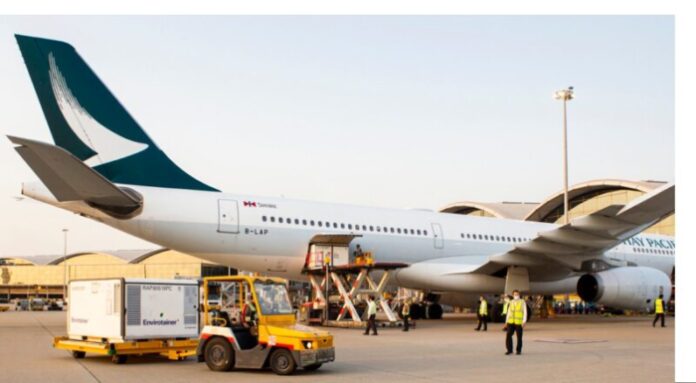
-
Global air cargo demand surpassed pre-pandemic levels in February this year as signs of industry improvement emerged, according to the International Air Transport Association
-
Asia Pacific led the regions with a 32.4% world market share; North America had 28.1% and Europe, 21.8%
-
IATA director general Willie Walsh air cargo declines in the regions mostly slowed from levels in January this year
Global air cargo demand rose above pre-pandemic levels in February this year, according to market data released this week by the International Air Transport Association. IATA said the industry trend showed slowing declines.
It was the first time in eight months that global air cargo demand crossed the threshold and beat January’s performance. At the close of 2022, demand had improved to near pre-pandemic levels.
Asia Pacific led the regions with a 32.4% share of the world market, followed by North America with 28.1% and Europe with 21.8%.
“The story of air cargo in February is one of slowing declines. Year-on-year demand fell by 7.5%. That’s half the rate of decline experienced in January,” said Willie Walsh, IATA’s director general.
Global demand, measured in cargo ton-kilometers (CTKs), fell 7.5% compared with February 2022, with a deeper drop of 8.3% for international operations, IATA said.
The demand decline in February was half the rate of the annual slide of 14.9% in December 2022 and 15.3% in January 2023.
Air cargo demand in February, however, was 2.9% higher than the February 2019 pre-pandemic levels – the first time in eight months that it has surpassed levels before Covid-19 played havoc with global trade.
“This shifting of gears was sufficient to boost the overall industry into positive territory (+2.9%) compared with pre-pandemic levels. An optimistic eye could see the start of an improvement trend that leads to market stabilization and a return to more normal demand patterns after dramatic ups-and-downs in recent years,” Walsh said.
Capacity (measured in available cargo ton-kilometers or ACTK) rose 8.6% year on year, reflecting the addition of belly capacity as the passenger side of the business continues to recover. International belly-capacity grew 57.0% y-o-y in February, reaching 75.1% of the 2019 pre-pandemic capacity.
IATA noted several factors in the operating environment:
- The global new export orders component of the manufacturing PMI, a leading indicator of cargo demand, grew steadily in February. China’s PMI level surpassed the critical 50-mark indicating that demand for manufactured goods from the world’s largest export economy is growing.
- Global goods trade fell 1.5% in January, a slower decline than the 3.3% drop in December 2022.
- G7 countries’ Consumer Price Index eased from 6.7% in January to 6.4% in February. Inflation in producer (input) prices fell 2.2 percentage points to 9.6% in December (last available data).
Regional performance
- Asia-Pacific airlines’ air cargo volumes fell 6.0% y-o-y in February 2023, a significant improvement from the 19.0% drop in January, as regional carriers gained from China’s lifting of Covid-related restrictions and economic activities resumed. Available capacity in the region grew 19.9% y-o-y as more passenger flights added belly capacity.
- North American carriers’ cargo volumes fell 3.2% y-o-y in February, a solid improvement from January’s 8.7% decline. A surge in international demand in February boosted the region’s market share in international cargo traffic to 21.7%, beyond the pre-pandemic level of 18.2% in February 2019. Capacity rose 2.8% y-o-y.
- European carriers showed the weakest performance of all regions with a 15.3% y-o-y slump in cargo volumes in February. But this was an improvement over January’s 20.4% dive. European airlines remain the worst-hit by the Ukraine war. Capacity fell 1.5% y-o-y in February.
- Middle Eastern carriers’ cargo volumes slid 8.1% y-o-y in February, a slight improvement from January’s 11.8% y-o-y decline. Capacity increased 9.3% y-o-y.
- Latin American carriers saw a 2.7% y-o-y decrease in cargo volumes in February, a reversal from the 4.6% increase in January. Capacity expanded 27.6% compared with February 2022.
- African airlines’ cargo volumes shrank 3.4% y-o-y, better than the 9.5% fall in January. Cargo demand on the Africa-Asia route surged 39.5% y-o-y in February while capacity increased 4.7% y-o-y.




